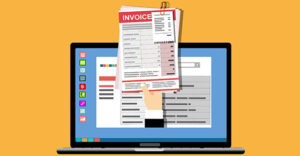Many of today’s businesses employ workers from across the generational spectrum. Employees may range from Baby Boomers to members of Generation X to Millennials to the newest group, Generation Z. Managing a workforce with a wide age range requires flexibility and skill. If you’re successful, you’ll likely see higher employee morale, stronger productivity and a more positive work environment for everyone.
Generational definitions
Definitions of the generations vary slightly, but the U.S. Chamber of Commerce Foundation defines them as follows:
Members of the Baby Boomer generation were born from 1946 to 1964,
Members of Generation X were born from 1965 to 1979,
Members of the Millennial generation were born from 1980 to 1999, and
Members of Generation Z were born after 1999.
Certain stereotypes have long been associated with each generation. Baby Boomers are assumed to be grumbling curmudgeons. Gen Xers were originally consigned to being “slackers.” Millennials are often thought of as needy approval-seekers. And many presume that a Gen Zer is helpless without his or her mobile device.
But successfully managing employees across generations requires setting aside stereotypes. Don’t assume that employees fit a certain personality profile based simply on age. Instead, you or a direct supervisor should get to know each one individually to better determine what makes him or her tick.
Best practices
Here are just a couple best practices for managing diverse generations:
Recognize and respect value differences. Misunderstandings and conflicts often arise because of value differences between managers and employees of different generations. For example, many older supervisors expect employees to do “whatever it takes” to get the job done, including working long hours. However, some younger employees place a high value on maintaining a healthy work-life balance.
Be sure everyone is on the same page about these expectations. This doesn’t mean younger employees shouldn’t have to work hard. The key is to find the right balance so that work is accomplished satisfactorily and on time, and employees feel like their values are being respected.
Maximize each generation’s strengths. Different generations tend to bring their own strengths to the workplace. For instance, older employees likely have valuable industry experience and important historical business insights to share. Meanwhile, younger employees — especially Generation Z — have grown up with high-powered mobile technology and social media.
Consider initiatives such as company retreats and mentoring programs in which employees from diverse generations can work together and share their knowledge, experiences and strengths. Encourage them to communicate openly and honestly and to be willing to learn from, rather than compete with, one another.
A competitive advantage
Having a multigenerational workforce can be a competitive advantage. Your competitors may not have the hard-fought experience of your older workers nor the fresh energy and ideas of your younger ones.
OnTarget CPA is proud of its multigenerational staff and our ability to work together and compliment everyone’s individual strengths and weaknesses.





